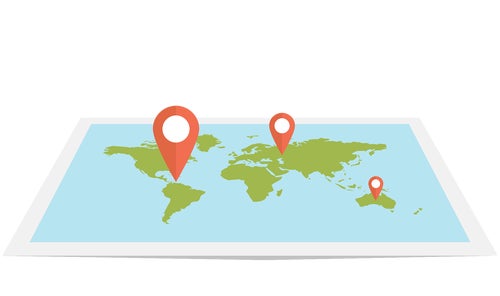Contents
- 1. Grace Hopper's Compiler (1952)
- 2. Jack Kilby and Robert Noyce Miniaturize the World (1958)
- 3. ARPANET Weaves the Web of the Future (1960s)
- 4. Object-Oriented Programming Takes Shape (1960s)
- 5. The MITS Altair 8800 Ushers in a New Era (1974)
- 6. Tim Berners-Lee Connects the World (1989)
- 7. Machine Learning and Artificial Intelligence Emerge
How many of the greatest inventions in computer programming history can you name? As every software engineer knows, crafting code is more than a job – it's a symphony of logic and innovation. But have you ever stopped to wonder how we got here?
The intricate systems we build today stand on the shoulders of giants. These groundbreaking inventions revolutionized the programming we all know and love.
Knowing the past is key to unlocking future innovation.
From Grace Hopper’s Compiler to the World Wide Web and AI, here are the 7 pillars of programming that laid the foundation for our digital world.
1. Grace Hopper's Compiler (1952)
Imagine translating entire novels word-for-word into another language. That's how cumbersome programming was before Grace Hopper's game-changer – the compiler.
In 1952, her team unveiled the first compiler, a magical tool that transformed human-readable instructions into computer-friendly code.
This paved the way for programming languages like COBOL, making coding more accessible and laying the groundwork for the diverse languages we use today.
2. Jack Kilby and Robert Noyce Miniaturize the World (1958)
Have you seen footage of those towering computers that filled entire rooms? Those behemoths wouldn't exist without the integrated circuit, dreamt up by both Jack Kilby and Robert Noyce in 1958.
This tiny chip, housing a multitude of electronic components, revolutionized technology.
From pocket calculators to the sleek devices we hold in our hands, this miniaturization marvel fueled the personal computing revolution and continues to impact electronics of all kinds.
3. ARPANET Weaves the Web of the Future (1960s)
Picture a world without instant information, where research collaboration meant snail mail and physical visits.
The 1960s saw the birth of ARPANET, a project funded by the U.S. military to connect research computers across the country.
What started as a simple idea – computers talking to each other – blossomed into the internet, the backbone of our global communication network and the foundation for the online world we know today.
4. Object-Oriented Programming Takes Shape (1960s)
Think of coding as building with Legos. Instead of individual lines of instruction, Object-Oriented Programming (OOP) introduced reusable "objects" with their own properties and behaviors.
This approach, pioneered by languages like Simula 67, brought order and structure to complex software development, allowing programmers to build upon existing blocks rather than starting from scratch.
Today, OOP remains a cornerstone of modern programming, paving the way for larger, more intricate software systems.
5. The MITS Altair 8800 Ushers in a New Era (1974)
For decades, computing power resided in massive mainframes, accessible only to a privileged few. Then came the MITS Altair 8800, a game-changer launched in 1974.
This mail-order "microcomputer" was affordable and customizable, sparking the personal computer revolution. Suddenly, individuals could have their own computing power, which changed everything for everyone.
6. Tim Berners-Lee Connects the World (1989)
Visualize navigating information through endless text files, a far cry from the hyperlinked tapestry of the web we know today. In 1989, Tim Berners-Lee, while working at CERN, envisioned a better way.
He invented the World Wide Web, a system for linking information with hyperlinks and displaying it visually. This, along with the HTTP protocol, laid the groundwork for the web we interact with daily.
Now we have a platform for information sharing, communication, and innovation unlike anything the world has ever seen.
7. Machine Learning and Artificial Intelligence Emerge
The dream of machines that learn and think like humans has captivated us for centuries.
In the 1950s, this dream began to take shape with the birth of Artificial Intelligence (AI) and Machine Learning (ML) concepts.
With languages like Lisp specifically designed for AI research, the seeds were sown for groundbreaking advancements.
These fields are transforming healthcare, transportation, and countless other sectors, blurring the lines between human and machine capabilities.
These 7 inventions represent just a fraction of the fascinating history of computer programming. Each breakthrough pushed the boundaries of what was possible, shaping the digital world as we know it.
The greatest inventions in computer programming have revolutionized how software engineers work, connect and solve problems. Who knows what innovations lie on the horizon?















![The Crossover Cognitive Aptitude Test [Official CCAT Guide]](https://assets-us-01.kc-usercontent.com:443/7beb5311-75a4-0049-50f5-8f58fd55aba7/57f22476-19f4-4309-a615-a27b35061cda/CCAT_Guide_Header2.jpg?fm=jpg&auto=format&w=500&h=500&fit=clip)











